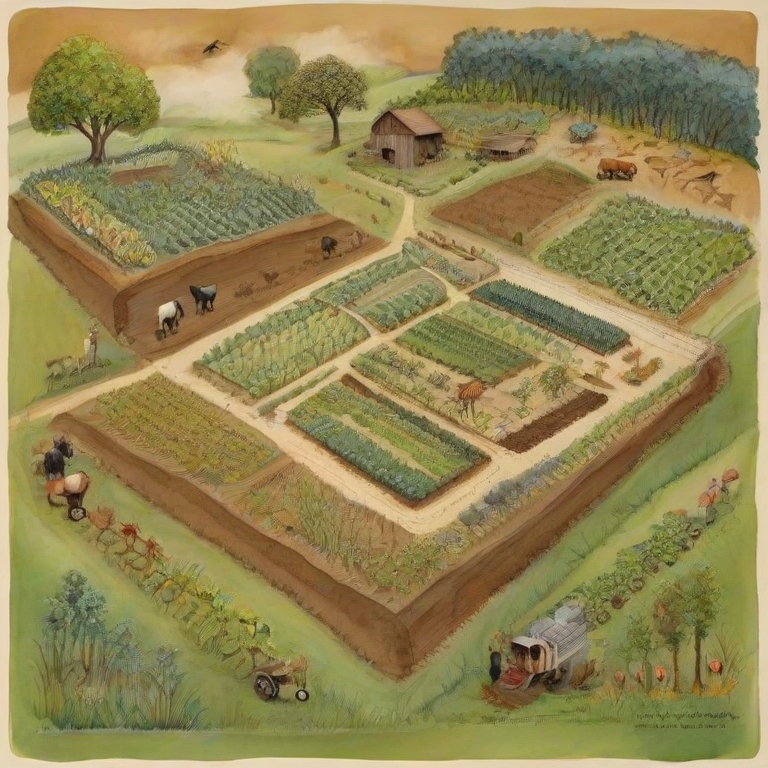Regenerative agriculture is an approach to farming that seeks to restore and enhance the health of the land, improve soil fertility, promote biodiversity, and build resilience within ecosystems. The primary goal is to create a sustainable and regenerative system that benefits both the environment and agricultural productivity. Here are key principles and practices associated with regenerative agriculture:
1. Soil Health:
- No-Till Farming: Avoiding or minimizing tillage helps maintain soil structure, reduce erosion, and retain moisture.
- Cover Cropping: Planting cover crops between cash crops helps prevent soil erosion, improves nutrient cycling, and enhances soil organic matter.
2. Crop Rotation:
- Diverse Planting: Rotating different crops through the same fields over time helps break pest cycles, improves soil health, and prevents nutrient depletion.
3. Biodiversity:
- Polyculture: Planting a variety of crops instead of monocultures enhances biodiversity, reduces the risk of pests and diseases, and improves overall ecosystem resilience.
- Agroforestry: Integrating trees and shrubs within farming systems provides additional ecological benefits, such as habitat for beneficial organisms and improved water retention.
4. Livestock Integration:
- Managed Grazing: Implementing rotational grazing practices for livestock promotes soil health, reduces overgrazing, and enhances nutrient cycling.
- Silvopasture: Combining trees, forage, and livestock in a symbiotic system that provides multiple benefits, including improved animal welfare and reduced environmental impact.
5. Conservation Practices:
- Water Conservation: Implementing practices such as rainwater harvesting, contour plowing, and efficient irrigation systems reduces water usage and minimizes soil erosion.
- Windbreaks: Planting trees and shrubs to create windbreaks helps protect crops from wind erosion and supports biodiversity.
6. Composting and Organic Amendments:
- Composting: Recycling organic waste into compost enriches soil with essential nutrients, enhances microbial activity, and improves soil structure.
- Organic Amendments: Using natural materials like manure and plant residues to enhance soil fertility and structure without relying on synthetic inputs.
7. Integrated Pest Management (IPM):
- Beneficial Insects: Encouraging natural predators and beneficial insects to control pests reduces the need for chemical pesticides.
- Trap Crops: Planting specific crops to attract pests away from main crops helps manage pest populations.
8. Community and Knowledge Sharing:
- Local Knowledge: Sharing traditional and local agricultural knowledge fosters community resilience and sustainable practices.
- Education and Outreach: Promoting awareness about regenerative agriculture principles helps build a community of farmers committed to sustainable practices.
9. Holistic Management:
- Holistic Grazing Management: Managing grazing lands in a holistic manner considers ecological, economic, and social factors to ensure sustainable and regenerative practices.
Regenerative agriculture emphasizes a holistic and systems-based approach, recognizing the interconnectedness of soil, plants, animals, and the environment. By adopting these practices, farmers aim to create resilient and sustainable agricultural systems that benefit the ecosystem, enhance soil health, and contribute to long-term food security.

